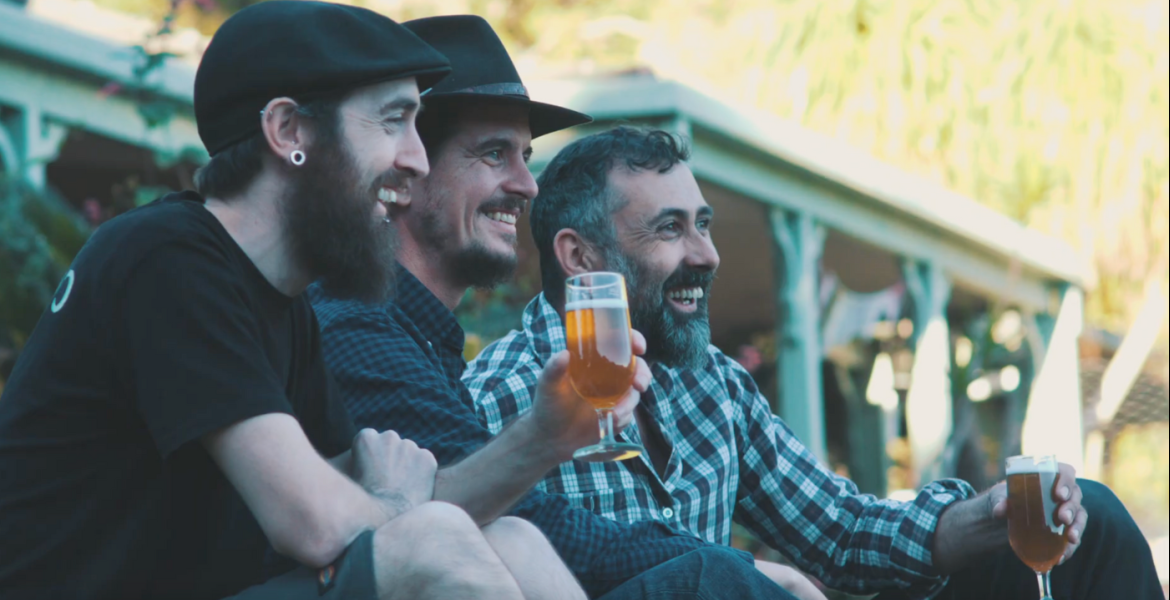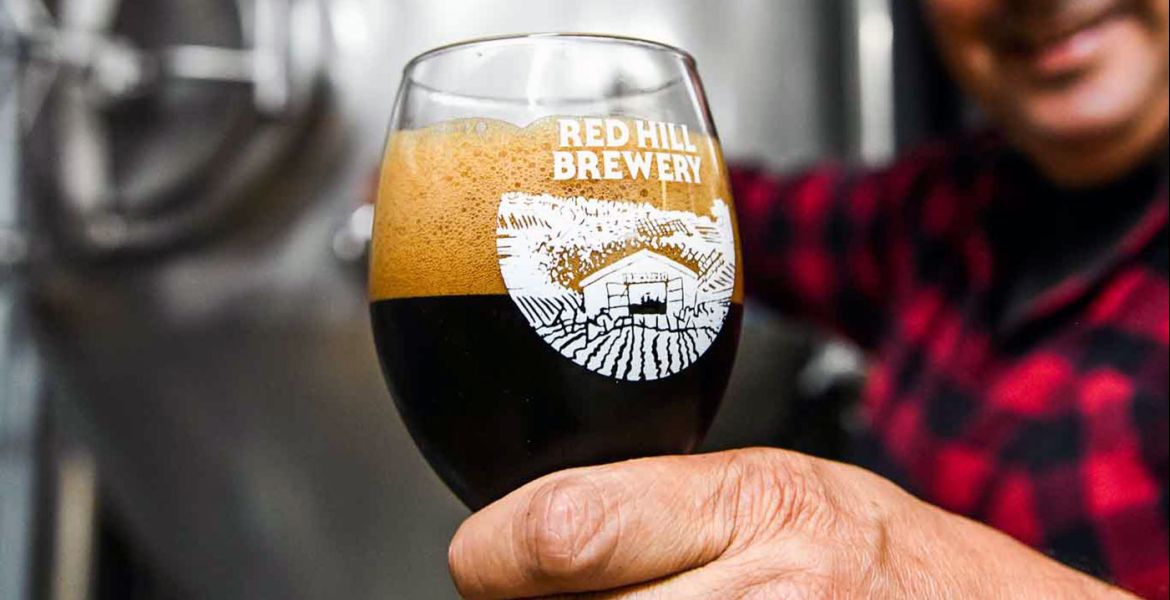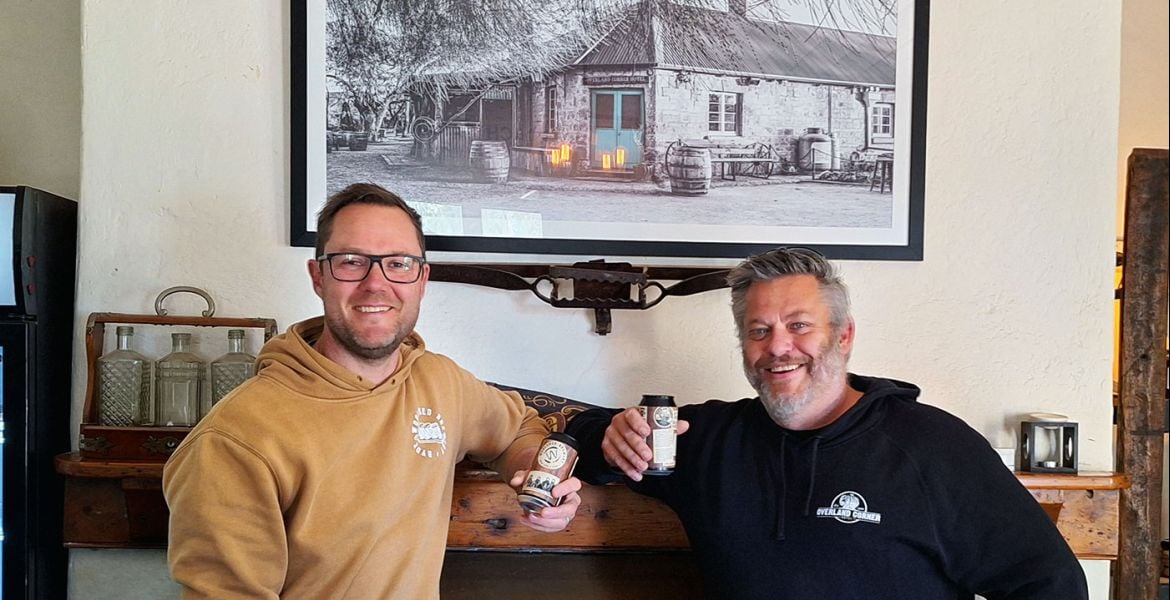In 2008, the field was wide and open for those who’d already launched a brewery in Australia. But, if you were living within that world, your view was probably far more myopic.
Back then, the challenges of gaining shelf space and taps – not to mention fighting to have craft beer recognised as more than a fad – were evident. But today, in a market that's becoming saturated, where social media has enabled the rise of vocal armchair critics, and craft is increasing market share in a declining beer category, the challenges are different and more numerous.
Questions of authenticity, for example, weren’t an issue a decade ago because chances are the owner was actually working the brew kit and probably didn’t care about much else because there was a business to run.
Indeed, from today’s perspective, the Australian beer world of 2008 was disparate and rudimental. The nostalgic legacy of the Sail & Anchor, Matilda Bay – Redback with lemon, anyone? – and Little Creatures Live, by then renamed Pale Ale, are one thing, but the reality of buying an Australian IPA in 2008 was quite another.
Ten years on, when almost every brewery releases some form of IPA and some produce little else, it pays to stop and think about that for a second.
While it wasn’t the first IPA brewed in Australia – and today it’s not even tagged as one – there can be little underestimating the role of a beer that first appeared in 2008, not just in popularising the style among the country’s early crafty adopters but also in introducing American hops to a wider audience.
As Feral's Hop Hog turns ten, Guy Southern joined brewery co-founder and former owner Brendan Varis and product development brewer Will Irving at the Swan Valley brewpub to reflect on the past decade and beyond, not just in terms of Hop Hog but the wider Feral story and its place within the rise of craft beer in Australia. After all, you could argue the longevity and influence of this beer ultimately rests in the relationship between these two men who, at times, seem more like step brothers than colleagues.
NB The interview has been lightly edited and condensed for clarity.
The brewery started in 2002, what were you doing before that?
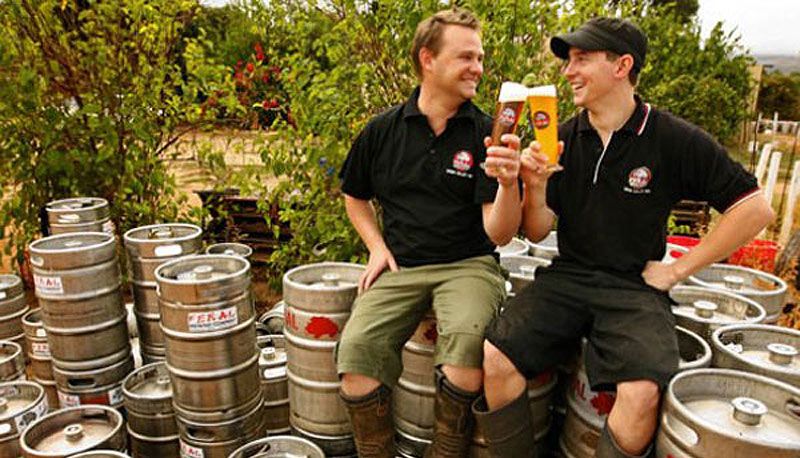
BRENDAN VARIS: I was working with DME as a project manager and we were brewing St Arnou for a while and the whole time this was bubbling up in the background.
Will came on as our very first sales person but we didn’t sell very much. I said: “I’ve got some bad news.”
WILL IRVING: I knew it was coming. It was at this table, Brendan was having conversations with Oakover Winery’s sales team and I was like: “Looks like I don’t have a job anymore.”
BV: So I said: “Bad luck, you’re not going to sell our beers. You’re fired as a sales guy.”
But before that my brother had been helping me in the brewery and we’d just had a big fight so I said: “If you want, there’s a job as a brewer going.”
Will was the second brewer that I’d trained and he picked it up quick. It wasn’t long before we could just look up to each other and kinda know. We didn’t have to speak. We very quickly learned how to work closely together.
What was the Hop Hog pilot batch like? Were you involved in that Will?
WI: Yeah, absolutely! I think I’d just started. I had three months worth of training.
BV: I remember the conversation when we put the beer together in our heads. I’d come back from the World Beer Cup judging with some Sculpin at about seven and a half percent. Going back to 2007, we were drinking some Pliny and there was a really nice beer that had been made for the conference by the San Diego brewers, the Symposium beer, and we kinda drunk those three and Sculpin was one that stuck out to us.
I guess it was: “Let’s do a six percent-ish version of these flavours that we’re getting here.” And the two that we select for, and still do select for, are really orange and pine needle. They’re the two that really stuck out.
I know Sculpin probably morphed more towards tropical fruit, and a lot of beers have, but we still stick pretty hard towards that orange and pine needle character.
Why’s that? Personal preference?
BV: Yeah, it’s just what it is. We like the beer the way it is and we’ve got other beers like War Hog that lean towards tropical fruit.
WI: And there wasn’t a huge amount of hops available back then, either.
BV: No Mosaic, no Equinox.
WI: Citra wasn’t about either.
BV: Galaxy was just dropping, in very, very limited supply. So, we had a smaller repertoire to pull from.
WI: Yeah, it was like Cascade, Chinook, Centennial – the three Cs and a little bit of Simcoe.
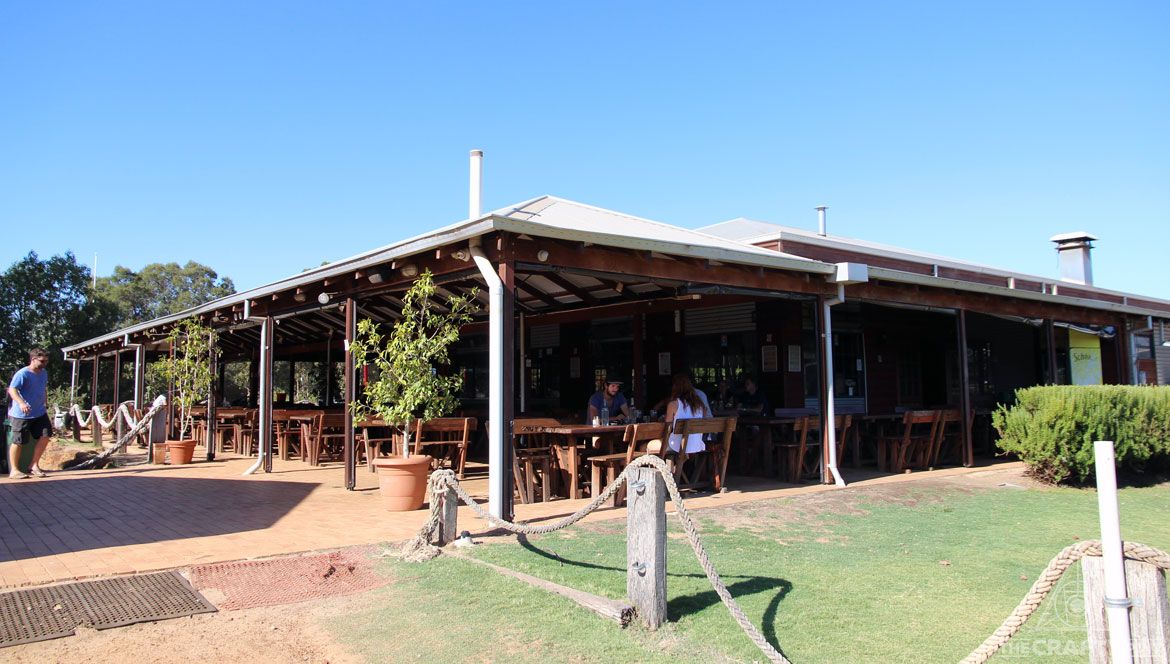
So, Brendan’s come back from the conference and says: “Hey, I’ve tried some cool beers and I’ve brought some fresh ones back.”
BV: We were sitting right outside the brewery.
WI: I remember it. I couldn’t believe that beer could actually taste that well.
BV: It was fresh, and obviously there was a few imports sneaking in. A lot of them European – the Mikkellers and the Nognes – but they always tasted oxidised.
WI: Where’s that old ficus that used to be here?
BV: The amount of dollars that we just tipped into this plant that used to be here. It was like $25 a bottle for a seven percent or eight percent IPA and they’d just be oxidised. So I brought those back fresh and it was a moment.
It would’ve been April or May in '07 and we had the beer out by September or October. I think it won the Perth Royal Champion Beer in 2008 and then it just went on from there.
Then Champion Australian Beer 2009.
BV: '09, '10 and '11 I think it was.
So, what’s that moment like? You’re at the awards and you’ve got this beer that’s bubbling away in the Swan Valley with limited capacity and then you win Champion Australian Beer?
BV: That particular night, that was a bit surreal. We won five classes and were getting a lot of beer out of this little brewery but we won Champion Large Brewery.
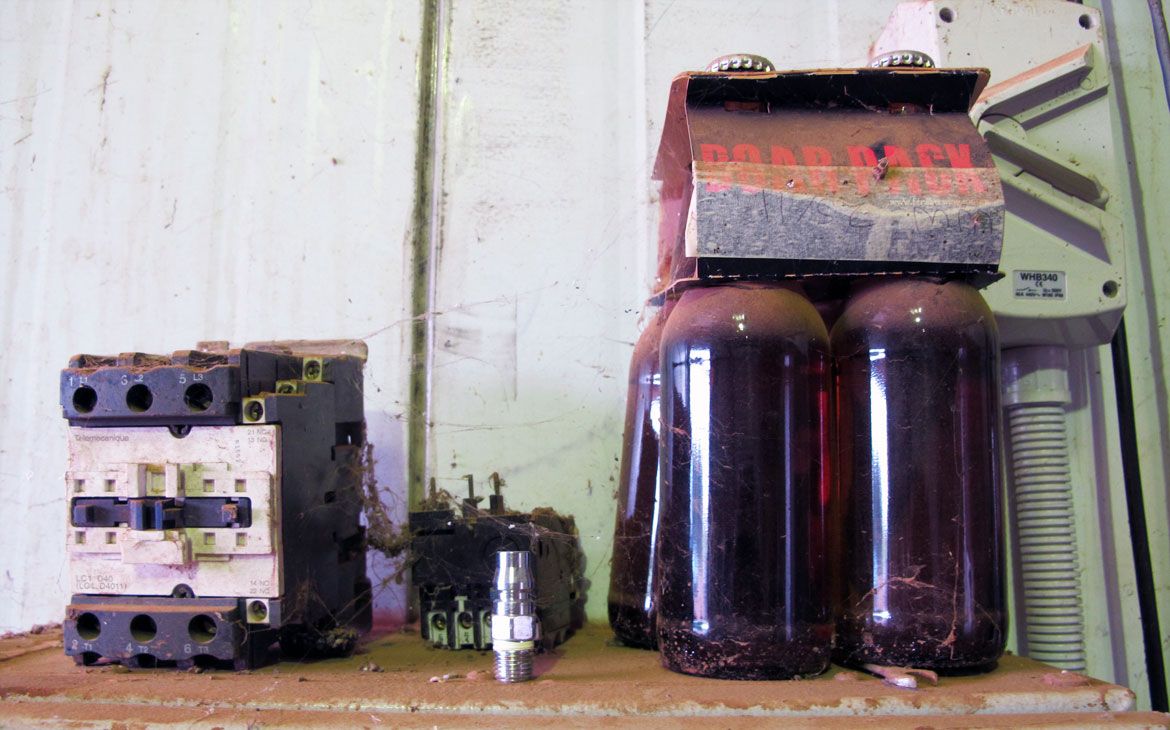
Was that a reflection on the industry at that stage?
BV: It was Small or Large – I think that 500,000 litres was large – and we were just above that and we could never get much more than that to be honest. So, that night overall was surreal.
The Hop Hog part of it was overlooked because we won for Razorback, White … Hop Hog got a little overshadowed.
That said, looking back from 2018, it seems like a tipping point.
WI: Yeah, 100 percent.
BV: You’ve also gotta remember that we opened in '02 and 2003 we won Champion Lager at the AIBA.
Despite clamour from East Coast beer drinkers and venues, beer lovers pretty much had to travel to WA to try Feral's beers, even after they won the five trophies in 2009. A handful of venues in Melbourne started pouring the occasional keg, with nothing making it to Sydney or Brisbane at the time. Even when beer did start trickling into those cities, there was work to be done...
BV: This would be my most humbling moment in beer ever … I think it was called the Pumphouse. We’d been selling them a fair bit of beer and they said: "We want to get you over and do an event."
They sorted out the event and named it “What’s in Brendan’s Fridge?”
So, I turn up there on a Friday night, there wasn’t that many people. I had a few drinks and later in the night it turned out that no one had actually registered to come and this was all staff that they’d put in their civvies to come along but it was a great night.
We’ve been back there many times now, and there’s other venues where we are doing tap takeovers where we can’t even get into the venue on a Wednesday night, so certainly that’s just an indication of where craft beer is now.
With that in mind, could a beer today get up and have the kind of longevity that Hop Hog’s had?
BV: I like to think yes, but it’s not going to be easy. I’d still like to think it could be done. I don’t know if a pale ale or an IPA is going to be quite as easy to do it with these days.
That’s a challenge to all craft brewers: that it’s not to go to the hoppy, the hoppy, the hoppy. We need to think, "What’s next?" because the two big breweries will crack the code on dry hopping soon. They haven’t yet through their big pots and pans but, when they do, what have we got left because at the moment everyone’s just trying to squeeze a little bit more hop flavour into something.
Or a different iteration like Brut IPAs or NEIPAs.
BV: Exactly right, and that’s the challenge for us. I don’t think it will be a pale or IPA. I think it’s going to be a ripping hybrid, a fermentation and hop driven beer.
I think there’s space for more unique and interesting beers to make their mark.
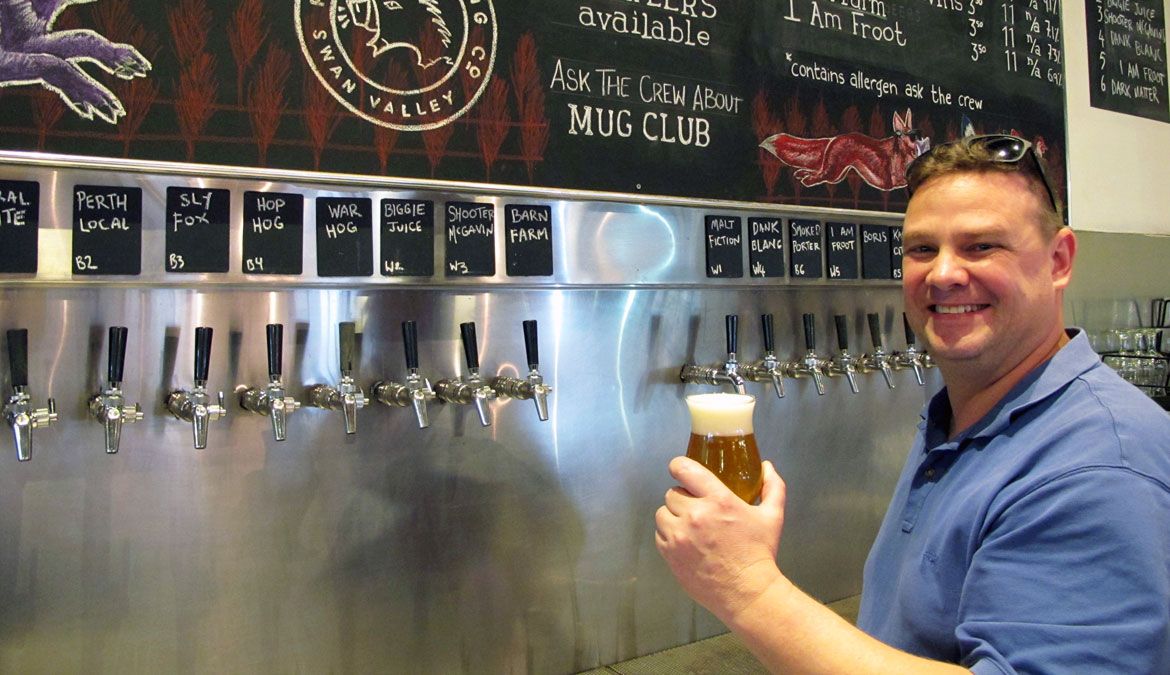
Do you think that, within this accelerated craft culture, the longevity of Hop Hog was partly built upon accolades and then it grew with you guys growing as a business.
BV: I think a lot of that comes with trust. And trust over time.
We’ve always said: “Liquid, liquid, liquid” and if they never get a bad one then they’ll always come back to it, which is another interesting story. Will, do you remember the very first packaged Hop Hog? Where was it done?
WI: The first packaged Hop Hog?
BV: At a large contract brewer. We never sold it.
We brewed it here in the Valley and then we got [Last Drop Brewery's] Jan Bruckner’s little tanker thing down here. Trucked it over to [the large contract brewer], they spun it around their filler and spat it out.
We just wanted to see how it would translate into the package and, if it was good, then maybe they could have done it or maybe they couldn’t, but we were obviously very nervous on the back of Feral White. We'd actually contract brewed that one out and that beer never recovered from the reputational damage that was done, so we were never going to do that with this beer.
So, it went through and it was oxidised. It didn’t meet mustard so it got sold as $40 cubes through the International Beer Store. Anyway, the rumour got going that it was Russian River cleanskins. It was still the freshest IPA that you would have bought in the country at the time but it just wasn’t what draught was, so that held us back six or nine months until we got some equipment of our own to package.
Why do you think Hop Hog has become such an iconic beer?
BV: Timing’s big. Like with any beer: balance and timing. Timely distribution and consistency and trust, I think. I really think a lot of it is consistency and trust. Everyone grazes and then they’ll pick up a pack of Hop Hog to settle into, same with Stone & Wood.
A lot of people will buy a half a dozen beers and then buy a Hop Hog or Pacific Ale or Creatures pack. It now sits in that: “I’ll experiment with these but I know that I’ll enjoy these" space.

Retailers I talk to say that culture has well and truly shifted in the past 18 months. Where previously people would buy their regular carton and then some singles, now it’s totally flipped to whatever is current, because every Friday there’s something new.
WI: I don’t think you build any brands like Hop Hog is now as a brewery by doing that: pumping out something out every week, because what are you going to be remembered for?
BV: For sustainability, breweries need to make a regular range of beers and I don’t mean regular beer quality, I mean regular as in availability. You can’t be coming up with new labels, new marketing, new recipes, promotions every other week. The well just runs dry at a point in time.
You need to find one that resonates, one that people like, and manage it really well by way of its message and quality. And just don’t let people down.
I think the other thing for Hop Hog was being on draught at pubs in Perth. That was the one tap that, as someone that was interested in craft beer, you’d go: “Well, at least they’ve got Hop Hog.”
BV: Yeah, a hoppy beer on draught!
We were lucky here in WA. I mean, Creatures was pretty available but, still, Hop Hog is next level in hop flavour and intensity and alcohol. I think it still stacks up as well as any pale ale on the market.
So, that’s a good point. Around '13 or ’14, a little black mark starts to appear through India on the label. Was that a deliberate move to reposition the beer?
WI: Yeah, a little bit.
BV: In hindsight, we didn’t get that right.
WI: There’s still probably questions about it now.
BV: It was more a reflection on how the market had moved by ’13, ’14 and, obviously, we’re known to be on the big end of the spectrum of flavour. As far as an IPA goes, 5.8 percent and high 40 IBUs is not a big IPA, so it wasn’t aligned with where Feral saw itself and where its range should be.
War Hog is at the very top end of IPA and that’s where we think an IPA should be in relation to our brand. It just wasn’t aligned with where we present our flavours in beers. But, in 2008, a beer like Hop Hog was not going to be accepted as a pale ale. There’s no way that it would.
And where we may have got it wrong was – and this is just commercial stuff – is it’s an expensive pale ale but, if we’d left it in the IPAs, it would have been a beautiful, cheap, easy-drinking IPA. But, as far as the integrity of our brand and what we think beer flavours should be, we think that IPAs should be stronger and more bitter than that, so I think it was important to do it for that reason.
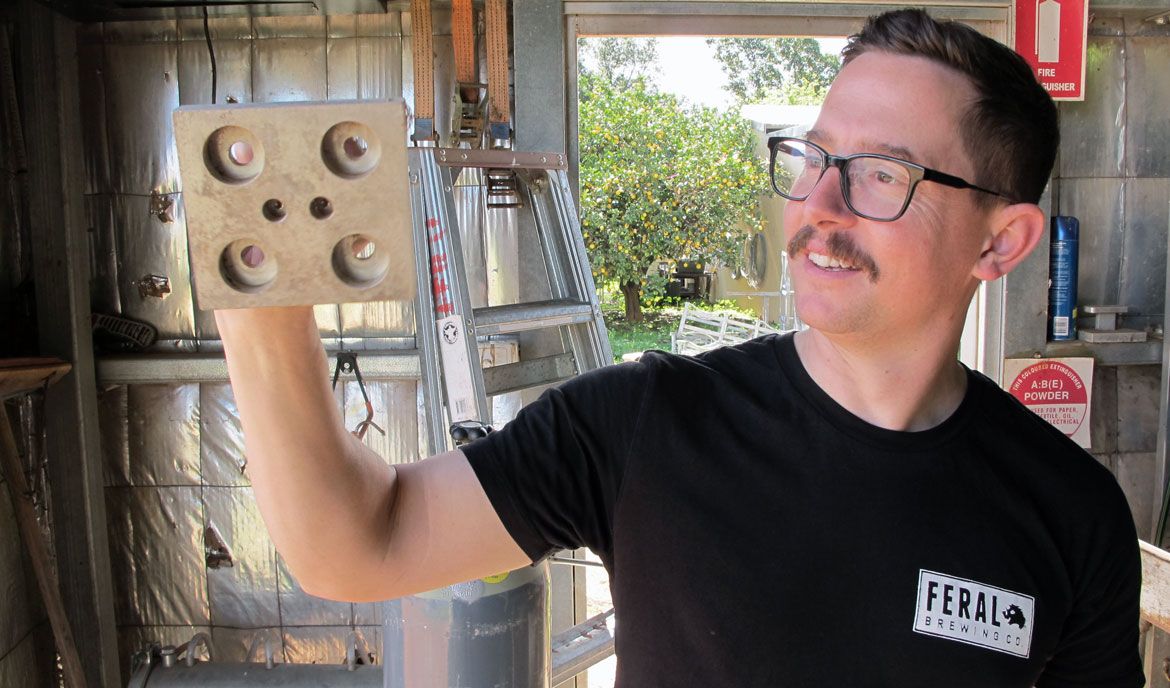
Can you tell me about the hand bottling days?
WI: It was brutal. As soon as those awards came in, that’s when we actually got a couple extra tanks. Demand for Hop Hog was sold before it was actually coming out of the tank.
Monday to Fridays was Bren in at 4am and me in at 6am and we’d work until it was dark. Saturdays, we’d sleep in and start packaging around 8 or 9 o’clock. It was just a learning curve the whole time. I mean, we could fire it up and have that bottling line working well and not touch a thing on it and everything would be fine, and then come in the next week and nothing would work, everything would go wrong, there’d be broken glass everywhere, labels on the floor.
BV: More mislabels than actual labels on bottles by a ratio of about 7:1 but that was just the reality of the time. We realised the contract brewing route wasn’t the way to go and we weren’t in the position to go and do a big brewhouse upgrade. We bought a little filler where we could micromanage the quality and suck up all the mess and pain and frustration and losses and wastage and whatever else and just get it done.
WI: It was a great way to learn, though, as far as packaging goes. You knew everything about that machine and could probably put it together blindfolded.
So, what was it like getting Hop Hog to market then? With you both brewing and bottling, I don’t imagine there was actual selling.
BV: We were limited by the little brewpub here in the Valley, which was already making heaps of draught for Perth, and by how much we could do, so there wasn’t much to go around. We didn’t need the PR. We didn’t need the marketing edge, we were selling the litres we had, so we didn’t need to go looking for it.
The phone would ring and we’d literally just put them on the list.
“We’ll see how much we’ve got next week.” “We’ll see how much we’ve got next week.”
It was very much like that. We were just on the phone and were helped by people we met along the way during beer journeys. We kinda knew who the usual suspects were. It was all relationship stuff.
It’s flicked around 180 degrees now but, back then, there was an over amount of demand and an undersupply of beer. Now, whilst demand has certainly grown, proportionally supply’s grown more, so there’s probably an oversupply of beer or brewing capacity, at least.
Back then, there was absolutely not enough local, fresh craft beer and imports tasted like shit.
So, Hop Hog volume was obviously growing in that period.
BV: It quickly overtook White and became half of the brewery, maybe 250,000 to 300,000 litres. Now, it’s less dominant in the portfolio. Sly Fox has got some good legs on it and War Hog has had the quickest growth by miles at the moment and Perth Local does well – I think there’s a good space for a proper made lager. The rest of the portfolio represents all of the aspects of beer in malt, hops, yeast and water and I think that’s an important thing.
Some of our beers are very small brands but they’re very important for us to more broadly showcase what beer can be. It would be easy for us to do what a lot of other people do where you make the old “hop gearbox”, where you’ve got a pale, a mid-strength hoppy beer, an IPA and then put out a 50-minute double IPA or something like that. It’d be really easy to do something like that and just drop the others but it’s really important for us to remember there’s much more to beer than just that.
Boris is made because we like making a strong stout for us to drink year round. You don’t need to wait until winter when everyone else is bringing them out. What do you have to wait for winter for? That’s our view.
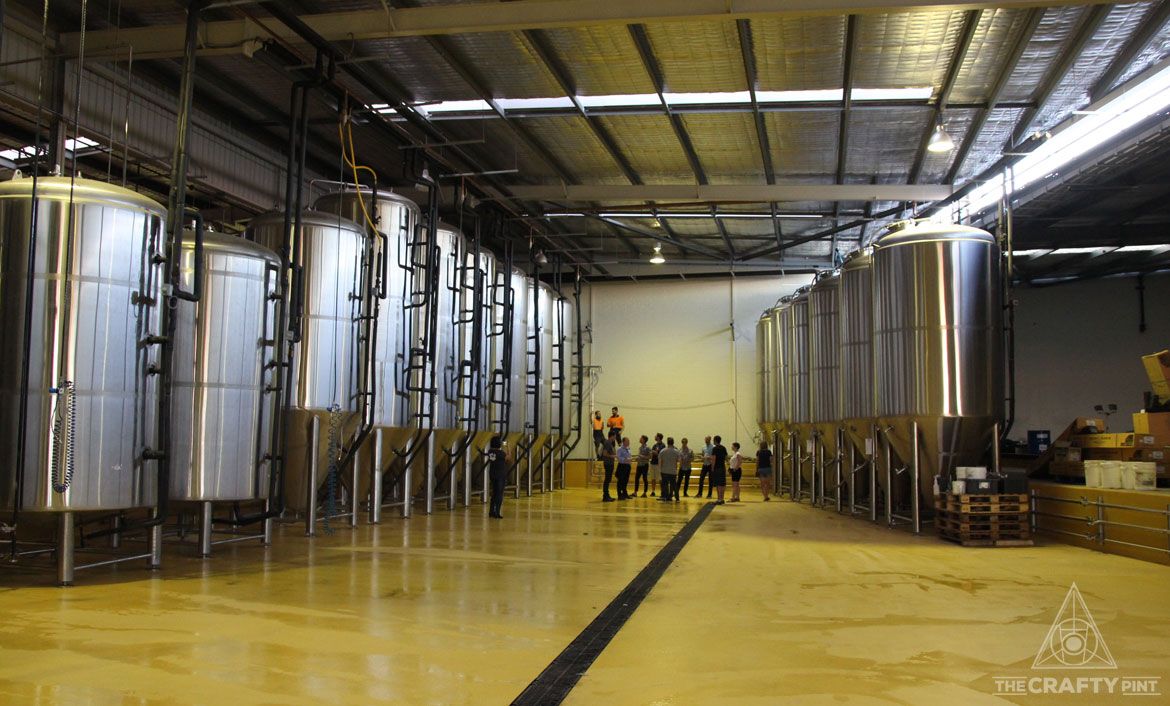
On a more personal level, how does it feel to have such an iconic beer attached to you both? Do you think about it?
BV: You don’t think about it too much but when people say: “Hop Hog was my first craft beer” or “Hop Hog is still one of my favourite beers", that certainly feels good and is very humbling.
WI: I don’t usually think about it. I don’t think about what it means to people, it was just a beer that we made that we tried to improve as time went on.
BV: Maybe it’s been a bit of a turning point where it gave some others the courage to up the ante, rather than just for a seasonal beer, [to] release a beer that’s a bit stronger than 5 percent or 5.5 percent, a bit hoppier or perhaps a bit more bitter than they may have been previously courageous enough to do.
If it did that and it spurred a few people on to do those kinds of things then that’s great and we are pretty pleased to have done that.
Looking back to the start of their working relationship…
BV: There were very few breweries that you could even share knowledge with. There was a handful of brewers: Brad Rogers (Matilda Bay then Stone & Wood), Richard Watkins who’s now at BentSpoke. So, when it came to knowledge sharing outside of our brewery, there was very few people you could actually talk to or even lean on.
More specifically, when it came to Hop Hog and the whole idea of dry hopping there was no knowledge of at all.
No one was doing it all?
BV: People were putting it in sacks and using pissy little amounts. Back then, the technique wasn't known. So, getting onto that technique and fine tuning that in advance of it being common knowledge was something that certainly gave us a good head start.
WI: It’s crazy to think our pale ale was late kettle hops and a little bit of bittering.
BV: When we opened in 2002, there was no dry hopping in the pale ale.
WI: To drink that beer now, people would go tell you to shit in your hat.
BV: Yeah, it would just be terrible.
We did some good stuff with [our one rotating tap] though. In 2003, we made probably the first double IPA in Australia, Tusk, for the first time. People forget that. We made Tusk in ’03.
WI: And it still wasn’t dry hopped!
BV: She was just this strong, really bitter beer.
How did dry hopping come about for Hog Hog?
WI: The early dry hopping techniques we did back in the day, we modified a funnel and Bren was just bucketing in hops and they started popping up like popcorn. Bren turns around and says: “Look at this” but he didn’t know that [adding hops to the fermenter is] like chucking a Mentos into a Diet Coke and, all of sudden, the whole thing hit the roof.
BV: See, we didn’t know that about dry hopping when we first did it.
WI: And also the processing past that. The only thing that we had for filtration was a plate and frame, so we were just jamming through that and it would take hours just to get through. We were actually sending hop solids through and afterwards we had to unscrew every single panel just for one filtration. That was when Hop Hog was completely bright.
BV: We were coming to terms with that when it wasn’t common knowledge or wasn’t in textbooks or [there was] no one to ask about. Even back then there was only a handful in the US, maybe 300 that were doing it well, which is not many globally. They weren’t keen to share.
It’s interesting where people think the difficult part of brewing a beer is. I must have written the Hop Hog recipe down for hundreds of people. I’ve written it on the back of coasters and it’s been posted online – and it is the real recipe – but you won’t necessarily make good Hop Hog out of it.
It’s like getting the best cabernet grapes in Margaret River; you won’t necessarily make good cabernet out of it.
It’s going to be interesting to see how some of the new world brewers go in quality, longevity and competition and relevance. There’s no free kicks anymore and there’s no low hanging fruit.
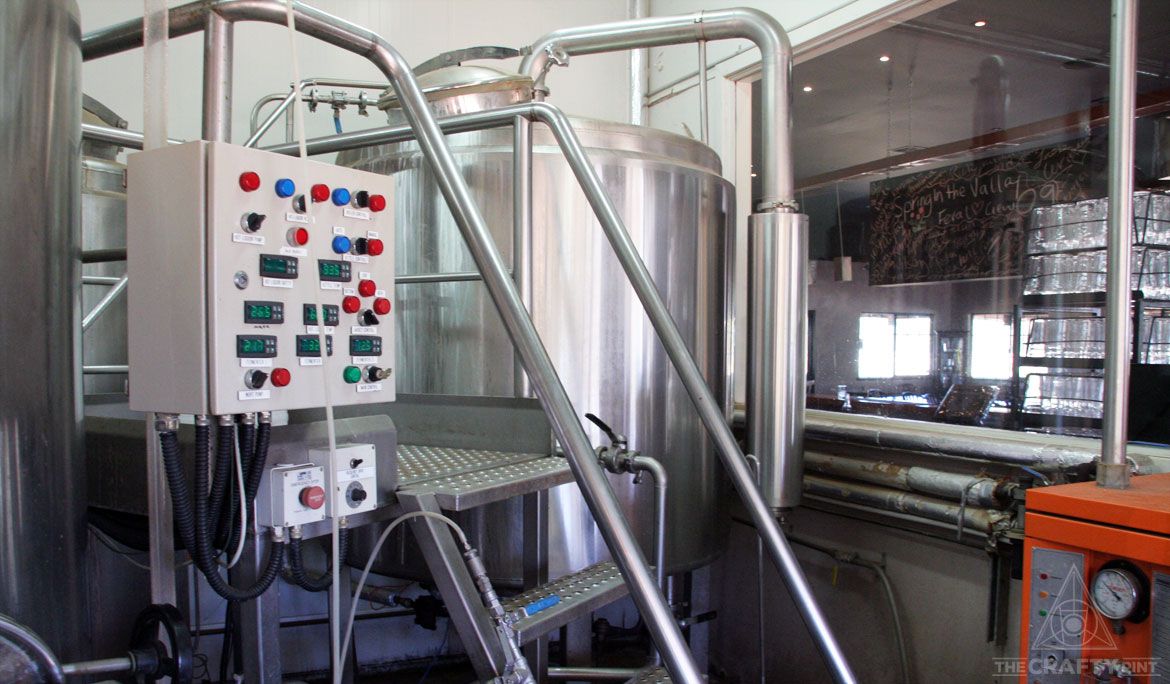
What do you think the vibe is on Hop Hog post-sale to Coca-Cola Amatil?
BV: On a sales perspective it’s rock solid. I think there’s a few real hardcore craft beer drinkers that were perhaps a bit disappointed on the sale but it’s gonna be what it’s gonna be.
For most people, I’d like to think that it’s history now. We’ve put plenty of runs on the board post sale with the beers that we’ve done to say that the liquid is what it always was and is always gonna be that way. Whether it’s F-15, whether it’s Biggie Juice releases, Shooter McGavin’s, Flanders Red, the liquid is absolutely unchanged and we are just conducting ourselves the way we always have.
People say it’s less hoppy and it’s not, it’s just got bigger dinosaurs walking around it now. It’s still 48 IBU, same original gravity, same present gravity, same colour, same yeast, same fermentation profile, subtle changes annually based on the different hop crops that come through.
It’s a beer we know and we know it well. It’s about consistency, which is the true mark of quality. If it is suffering, it’s probably because it’s ten years old and it’s not the cuddly new puppy anymore.
There’s a lot more competition these days.
BV: That exactly right. So, we’ve got two dogs, right. One is like a big Tulear and she’s quite old and everyone used to say: “She’s so cute, she’s so cute, she’s so cute.”
And then we’ve got a miniature Dachshund which is dappled brown and he’s a puppy. She don’t get a look in anymore. She’s still the same dog!
A decade after its debut, the brewery that never got around to celebrating anything will be toasting Hog Hog becoming a teenager in every state. With celebrations that include multiple Hop Hog variants and an anniversary canned release, it‘s likely many drinkers are going to be reminded about an old friend over the next few months.
Cans launch in all good WA bottleshops from October 11 then in the rest of the country from October 19. There's an IPA Showcase at the Royal Albert Hotel in Sydney on October 27 then Hop Hog’s 10th Birthday Party WA on November 16 to coincide with Tusk Day.
You can check out the other beers in the Story Of... series here. And if you've got a beer you'd love to see featured here, drop us a line.
About the author: Guy drinks and writes about beer, goes for a run most mornings and makes his own chilli hot sauce. Find out more on Goodtimes Craft Beer via Facebook and Instagram.
UPDATE! Feral has given us three cases of Hop Hog plus merch to give away to Crafty Cabal members. Simply enter the ballot by the end of the month and we'll pick three winners. Cheers!







